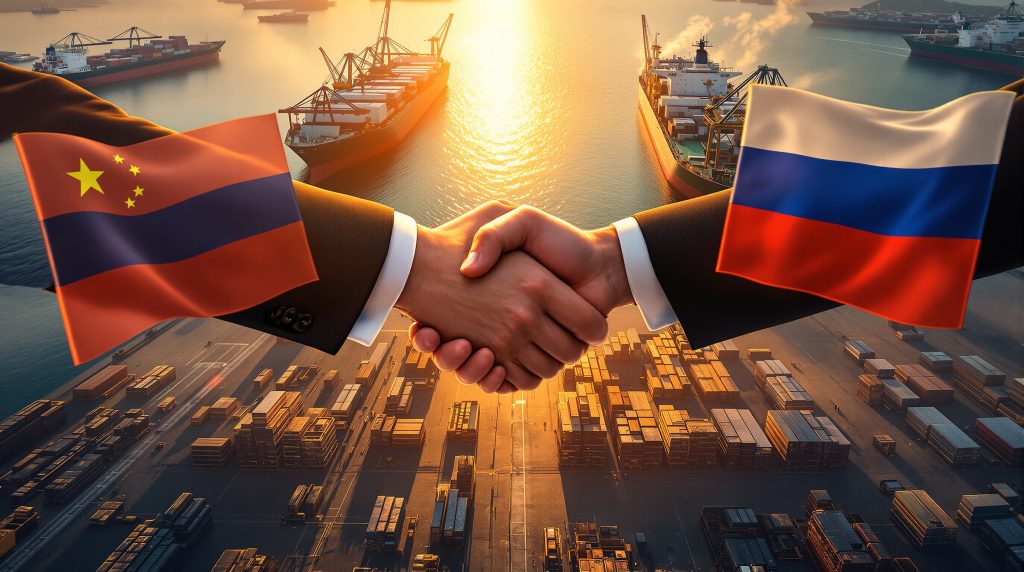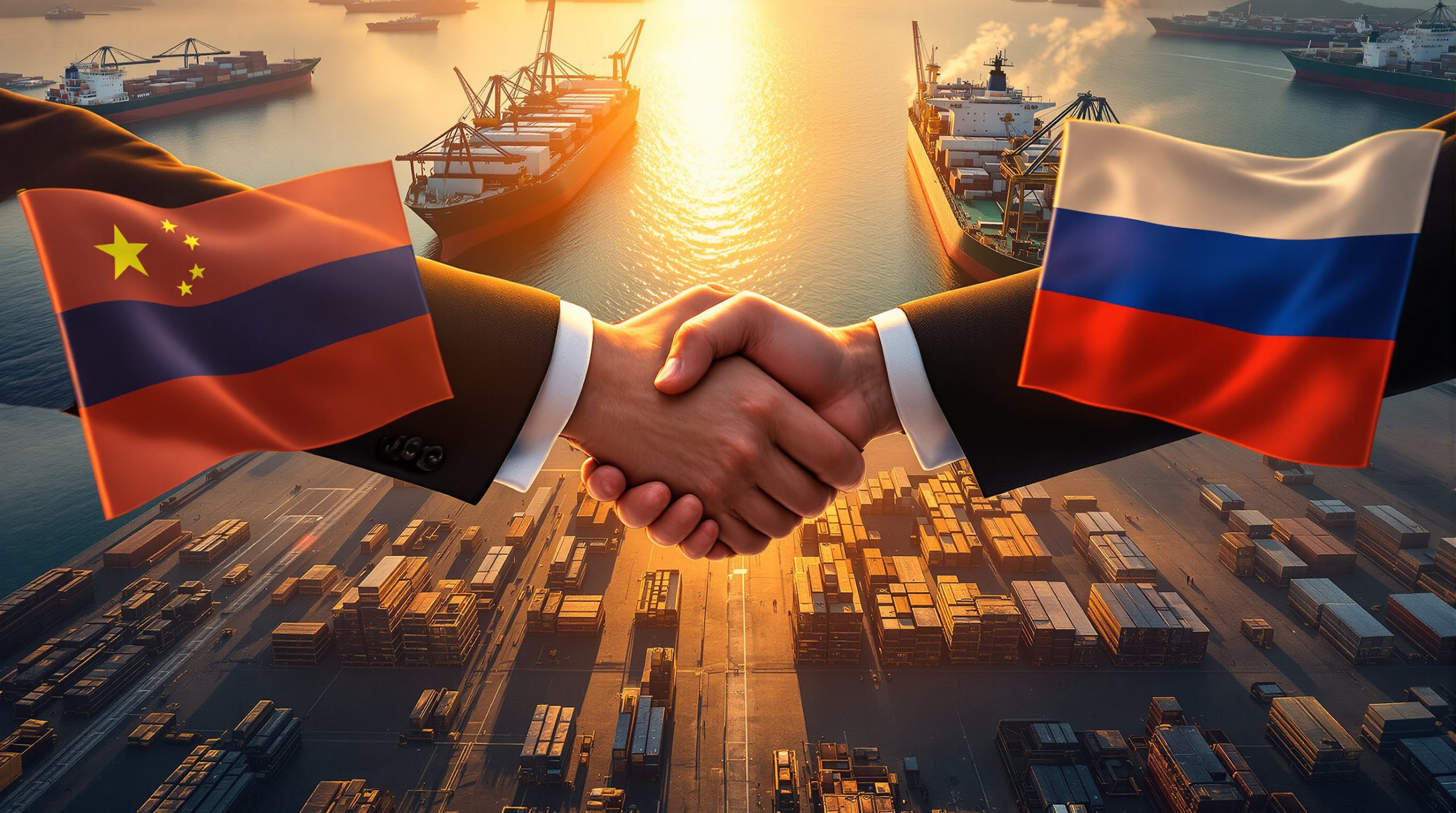China's Strategic Shift: How Copper and Nickel Subsidy Cuts Impact Russian Metal Trade
China has recently eliminated an unofficial subsidy program that previously benefited state-owned enterprises purchasing copper and nickel from Russia. This policy shift, implemented before President Putin's September 2025 diplomatic visit to China, marks a significant change in the financial incentives that have supported metal trade between the two nations since Western sanctions were imposed on Russia in 2022.
According to Bloomberg News, Russian copper sales to China surged 66% in the first five months of 2025, while nickel exports more than doubled during the same period. This dramatic increase highlights Russia's growing dependence on Chinese markets following international sanctions.
Understanding China's Subsidy Mechanism
The now-discontinued rebate system operated as an unofficial financial incentive that applied specifically to copper and nickel imports from Russia, Iran, and Mongolia. Industry sources familiar with the mechanism note it provided either a percentage-based rebate or fixed amount depending on market conditions, making Russian metals more price-competitive in the Chinese market.
The size of the rebate varied based on market conditions – either as a small percentage of the metal's value or a fixed amount – and was administered through state-owned enterprises' procurement channels. This system effectively created a preferential pricing structure for Russian metals entering the Chinese market.
What Prompted China's Subsidy Withdrawal Decision?
The timing of this policy change is particularly noteworthy, as it occurred before President Putin's four-day diplomatic visit to China in early September 2025. Despite this adjustment, China's President Xi Jinping strengthened political and economic ties with Putin during the visit, including paving the way for increased Russian gas imports.
Geopolitical Considerations
Industry observers suggest this represents a targeted adjustment rather than a fundamental shift in China-Russia relations. The Chinese government appears to be recalibrating specific aspects of its trade relationship with Russia while maintaining broader economic cooperation.
The decision reflects China's nuanced approach to international trade relations during a time of global tariff impacts. By modifying this specific subsidy while expanding cooperation in other sectors like energy, China demonstrates its strategic flexibility in managing international relationships.
Market Dynamics Influencing the Decision
Several market factors likely contributed to China's policy adjustment:
| Market Factor | Current Status | Potential Impact |
|---|---|---|
| Nickel Market | Global oversupply | Reduced need for subsidized Russian imports |
| Indonesian Production | Significant growth backed by Chinese investors | Alternative supply sources diminishing Russian leverage |
| Copper Inventories | Low global stocks outside the US | Strategic stockpiling priorities shifting |
| Chinese Domestic Needs | Evolving industrial requirements | Recalibration of import incentive structures |
The nickel market remains oversupplied, with significant growth in Indonesian output fueled by Chinese investors. This diminishes China's need for subsidized Russian nickel imports, as alternative supply chains have developed.
Simultaneously, copper trade flows in 2025 have been skewed by massive shipments to the US in anticipation of tariffs, leaving inventories relatively low in the rest of the world. This changing supply-demand dynamic may have prompted China to reassess its subsidy policies.
How Will This Impact Russian Metal Exports?
Despite the subsidy removal, Russia's reliance on China as an export destination has intensified dramatically since Western sanctions were imposed in 2022.
Russia's Growing Dependence on Chinese Markets
Russian metals exports to China have surged since the Kremlin sent troops into Ukraine in 2022, resulting in international sanctions and trade restrictions. Trade Data Monitor reports that Russian copper sales to China advanced 66% in the first five months of 2025, while nickel market trends show imports more than doubled during the same period.
This growing dependency gives China significant leverage in the trading relationship. With Western markets largely closed off due to sanctions and trade restrictions, Russian producers have limited alternatives to Chinese buyers.
Economic Implications for Russian Producers
The subsidy withdrawal creates several challenges for Russian metal exporters:
- Reduced price competitiveness in their largest remaining market
- Potential margin compression as Chinese buyers gain negotiating leverage
- Increased vulnerability to Chinese policy decisions
- Limited ability to redirect exports to alternative markets
While some of Russia's biggest producers are not directly sanctioned by the US and its allies, new Russian supplies can no longer be delivered to the London Metal Exchange and the Chicago Mercantile Exchange. These exchange restrictions further limit Russia's options for metal exports.
Industry sources suggest the withdrawal of the subsidy is unlikely to substantially impact Russia's massive metal flows, given Moscow's reliance on Chinese buying. However, it may require Russian producers to accept lower prices to maintain market share.
What Does This Mean for Global Metal Markets?
The removal of this subsidy could accelerate several ongoing trends in global metal markets, particularly the bifurcation between Western and non-Western trading spheres.
Shifting Trade Patterns
Global metal markets have increasingly split into separate trading spheres since Western sanctions were imposed on Russia. The subsidy removal may deepen this division by:
- Further concentrating Russian metal flows toward China and other non-Western markets
- Potentially creating price discounts for Russian-origin materials to maintain market share
- Increasing China's influence over global copper supply forecast
- Reinforcing separate Western and non-Western metal trading spheres
These shifting trade patterns could create price disparities between Russian and non-Russian origin materials, with potential advantages for certain buyers and challenges for others depending on their supply chain requirements.
Supply Chain Implications
This policy shift highlights broader supply chain dynamics that are reshaping global metal markets:
- China's dominant position in metal refining provides significant market influence
- Western consumers face increasingly bifurcated supply options
- Price disparities may emerge between Russian and non-Russian origin materials
- Strategic stockpiling becomes increasingly important for supply security
Copper trade flows in 2025 have been affected by massive shipments to the US in anticipation of tariffs, leaving inventories relatively low elsewhere. This has created regional imbalances that could be exacerbated by changing Russian export patterns.
How Does This Fit Into China's Broader Resource Strategy?
China's decision to adjust this subsidy appears to be part of a broader strategic approach to resource security and international trade relations.
Strategic Metal Stockpiling
While specific details of China's strategic stockpiling activities are not publicly disclosed, the country has historically managed its metal reserves with careful attention to both short-term market conditions and long-term industrial needs.
The subsidy adjustment may reflect evolving priorities in China's resource strategy:
- Diversification of supply sources to reduce vulnerability to any single partner
- Optimization of import structures to match evolving industrial priorities
- Balancing immediate cost considerations against long-term supply security
- Strategic positioning in an increasingly fragmented global trading system
By modifying specific aspects of its Russian metal import policy while maintaining the broader trading relationship, China demonstrates its sophisticated approach to resource diplomacy.
Geopolitical Positioning
The timing of this policy change, shortly before President Putin's visit, suggests a carefully calibrated approach to international relations:
- Maintaining strong economic ties with Russia while adjusting specific incentives
- Leveraging dominant position in metal refining for strategic advantage
- Balancing relationships with various producing nations
- Optimizing import structures to match evolving industrial priorities
China's approach reflects its position as the world's largest metal consumer and its growing influence in critical minerals supply chain. By adjusting specific policies rather than making dramatic changes, China maintains flexibility while gradually reshaping trade flows to its advantage.
What Are The Market Outlook Implications?
The global metal markets face several crosscurrents as a result of this policy change and broader market developments.
Copper Market Dynamics
Copper trade flows in 2025 have been significantly affected by anticipatory shipments to the US ahead of potential tariff changes. This has created an unusual market dynamic:
- Global inventories remain relatively tight outside the US
- Chinese demand patterns are evolving with economic transitions
- Russian export flows remain substantial despite subsidy changes
- Regional price premiums may develop based on material origin and availability
These factors suggest that copper price prediction analyses should closely monitor regional price differentials and potential shifts in trade flows as the market adjusts to changing policy incentives.
Nickel Market Forecast
The nickel market presents a different picture, characterized by:
- Persistent global oversupply conditions
- Indonesian production growth continues to reshape market fundamentals
- Chinese investment in Indonesian operations provides alternative supply channels
- Russian nickel may face greater competitive pressure than copper
The nickel market remained oversupplied throughout 2025, with growth in Indonesian output fueled by Chinese investors. This alternative supply source diminishes China's need for subsidized Russian nickel, potentially leading to greater price pressure on Russian producers.
How Should Market Participants Respond?
The changing landscape for Russian metal exports to China creates both challenges and opportunities for various market participants.
Considerations for Metal Consumers
Metal buyers should evaluate several factors in light of these developments:
- Potential for regional price disparities based on material origin
- Supply security implications of evolving trade patterns
- Contract structures that provide flexibility amid changing policies
- Strategic inventory management to buffer against market shifts
Buyers with flexibility regarding material origin may find opportunities to optimize costs, while those with specific requirements may need to adjust procurement strategies to ensure supply security.
Implications for Producers
Metal producers face a changing competitive landscape:
- Shifting cost competitiveness among different supply sources
- Evolving customer preferences regarding material origin
- Strategic importance of maintaining diverse customer bases
- Potential for further policy changes affecting trade flows
Producers should focus on operational efficiency and customer relationships to navigate these changing market dynamics. Flexibility and responsiveness to regional market conditions will be increasingly important as global trade patterns continue to evolve.
FAQ: China's Metal Import Policy Changes
How significant was the subsidy for Russian metal exporters?
While specific figures weren't publicly disclosed, industry sources indicate the subsidy provided a meaningful competitive advantage for Russian copper and nickel in the Chinese market, helping offset logistical costs and maintaining market access despite Western sanctions.
Could this signal broader changes in China-Russia economic relations?
This appears to be a targeted adjustment rather than a fundamental shift in relations. During President Putin's September 2025 visit, China and Russia strengthened ties in other areas, particularly energy cooperation, suggesting a recalibration rather than a reduction in economic partnership.
Will this significantly reduce Russian metal flows to China?
Industry analysts suggest the impact will be limited due to Russia's heavy dependence on Chinese buying amid Western restrictions. The subsidy removal may affect pricing more than volumes, potentially requiring Russian producers to accept lower margins to maintain market share.
How does this relate to China's strategic resource priorities?
The subsidy adjustment likely reflects China's evolving strategic priorities in metal procurement, balancing cost considerations against supply security and international relations. The change demonstrates China's sophisticated approach to resource diplomacy in an increasingly complex global environment.
What alternatives do Russian producers have?
Russian metal exporters have limited alternatives to the Chinese market following Western sanctions. New Russian supplies can no longer be delivered to major Western exchanges like the London Metal Exchange and Chicago Mercantile Exchange, constraining their market options and increasing dependency on Chinese buyers.
Ready to Get Ahead of Major ASX Mineral Discoveries?
Discover why significant mineral finds can lead to exceptional market returns by exploring the dedicated discoveries page at Discovery Alert, where the proprietary Discovery IQ model transforms complex mining data into actionable investment opportunities before the broader market responds.




